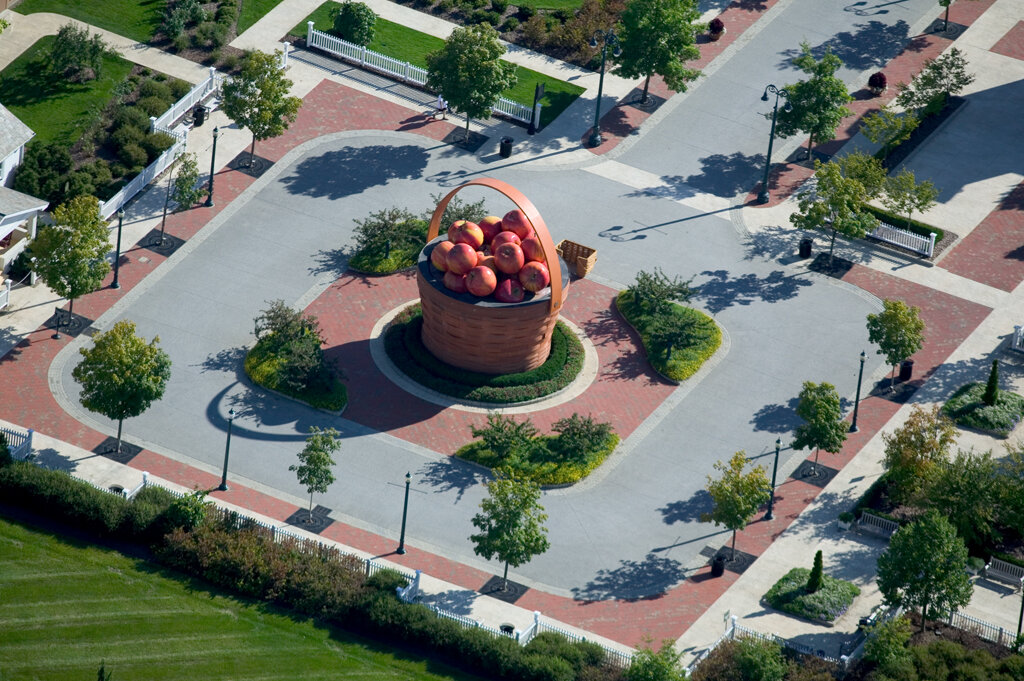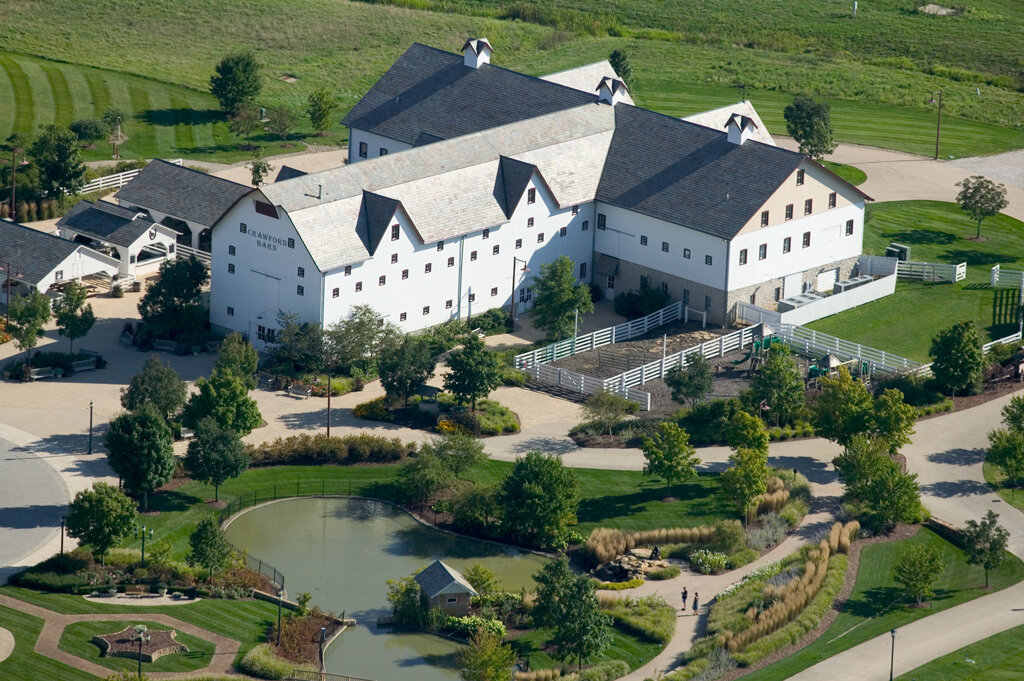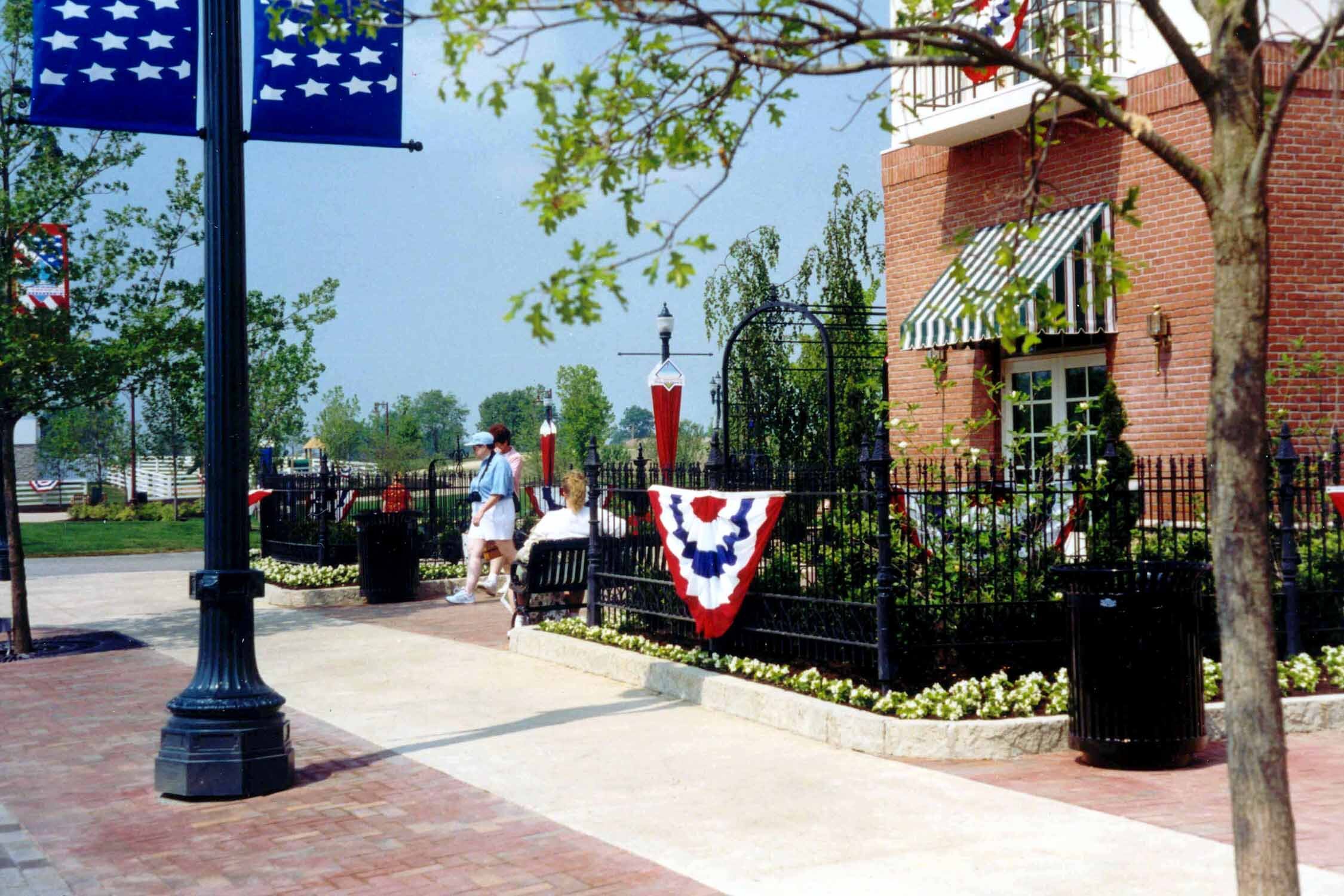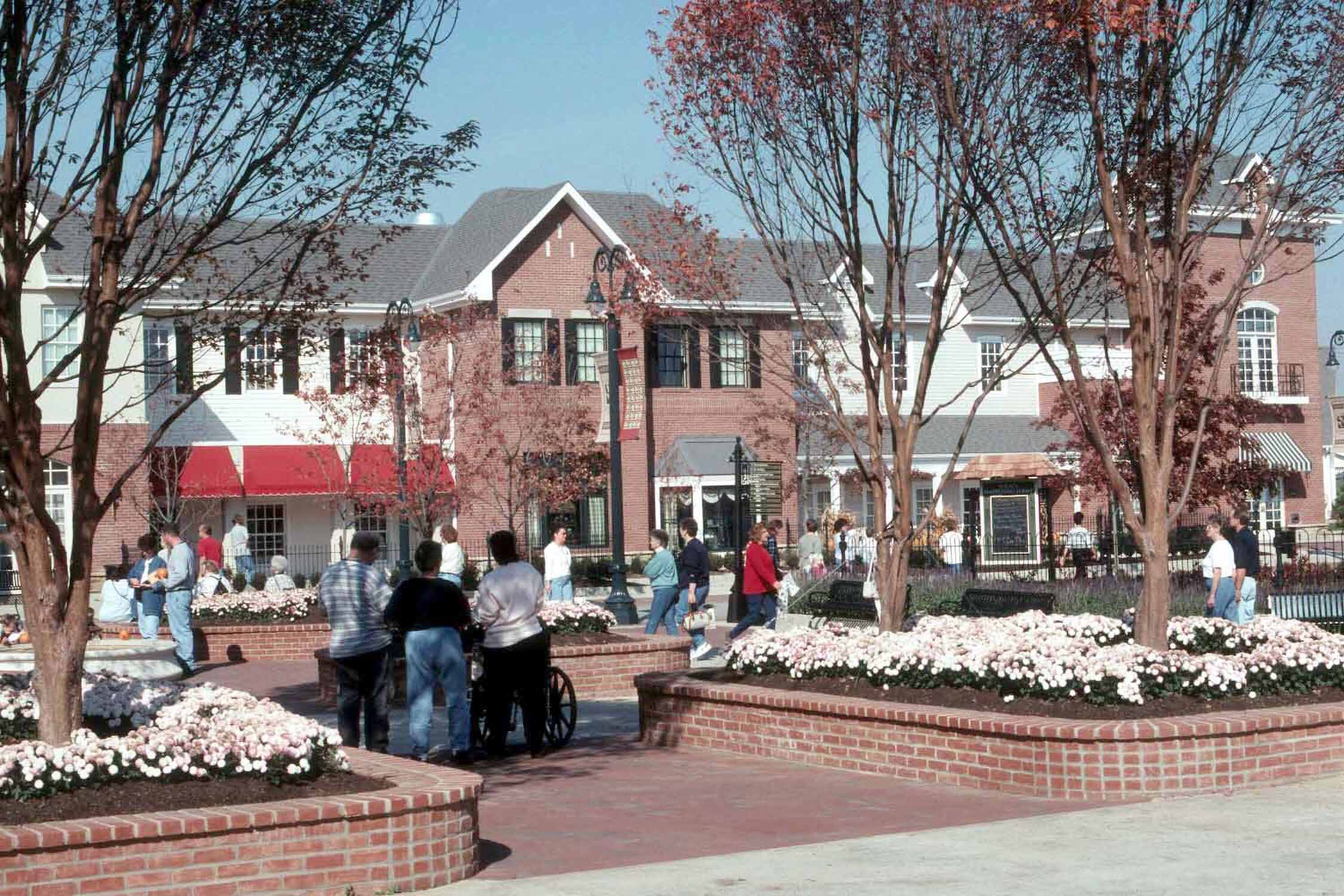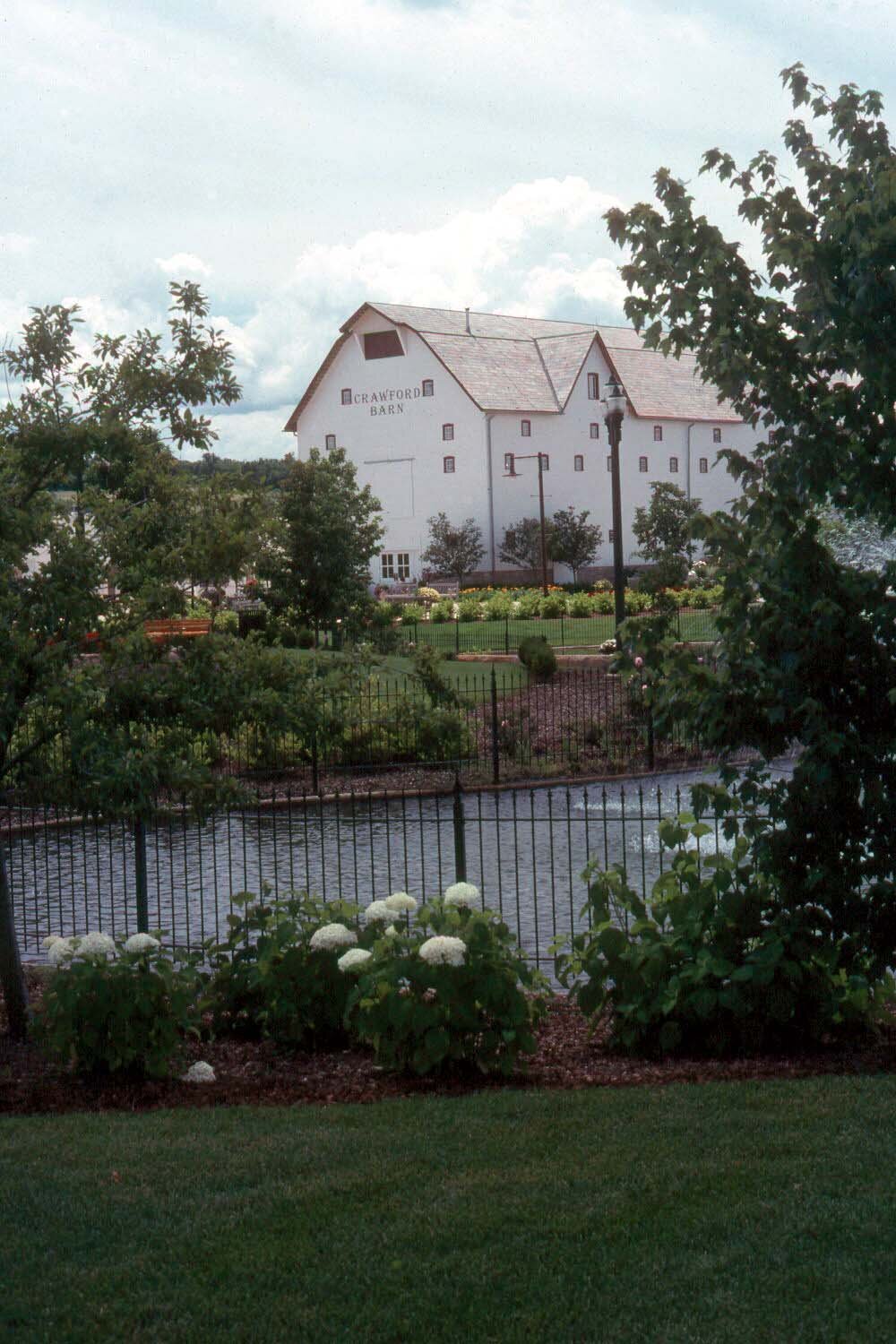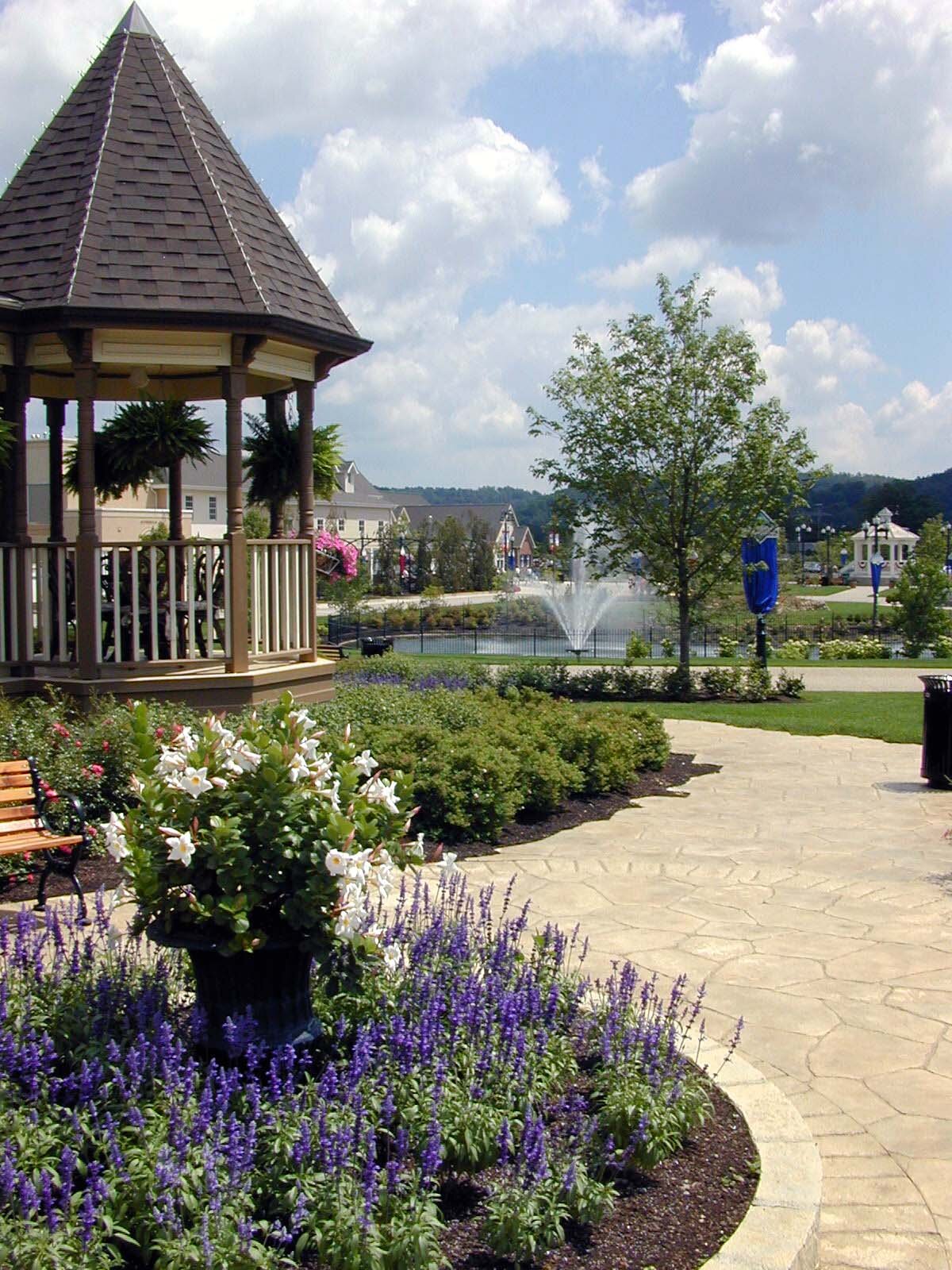Longaberger Homestead
Frazeysburg Ohio
Patrick J. Beam designed and executed this project as a Principal of Bassett Associates.
The Longaberger Homestead, a 30-acre shopping and entertainment complex brings together the charm and atmosphere of a time when family and simple pleasures were the center of American life. The major features include:
Arrival at the WELCOME CENTER, reminiscent of a Victorian train station with wrought iron fences, ornamental lighting, brick and cut stone paving.
MAIN STREET, the setting for the Longaberger “AT HOME” incorporates lushly landscaped terraces with period furnishings and wrought iron fencing along a simulated gravel street with cobble gutters and a large hand-woven basket filled with flowers.
Replicas of a Longaberger family home and original workshop have been located at one end of Main Street, along with the Longaberger Restaurant, all surrounding a fifteen-foot tall apple basket in APPLE BASKET SQUARE.
At the opposite end of Main Street, the visitor encounters a Victorian gazebo in the center of the Village Green while across the Rose Garden & Mill Pond, ROSE TEA HOUSE perches prominently on the hillside.
The Longaberger Homestead experience culminates at the reconstructed 24,000 square foot CRAWFORD BARN, an important center of activity and historical memorabilia.
The Village Green and Sentimental Rose Tea House Garden present walkways featuring a variety of subtle texture and color changes that utilize a mixture of sandstone, limestone and granite paving. The Victorian Garden Mill Pond is comprised of informally shaped pools on two levels separated by a two-foot high weir of simulated sandstone block. Adjacent to the weir is a “Springhouse” constructed with specialty concrete finishing to replicate native sandstone blocks. The structure, complete with slate roof and wooden beadboard door and gable, contains the pumping equipment for the irrigation and water supply system. Decorative fountains and floating flower baskets complete the aesthetic contribution of ponds to the Victorian Village.

